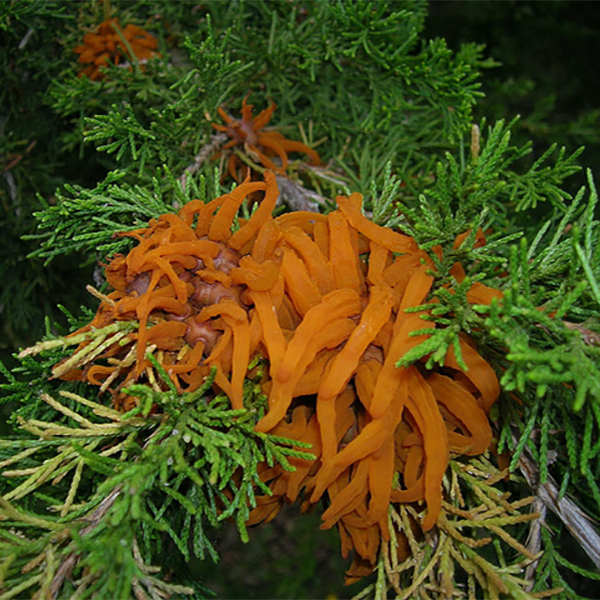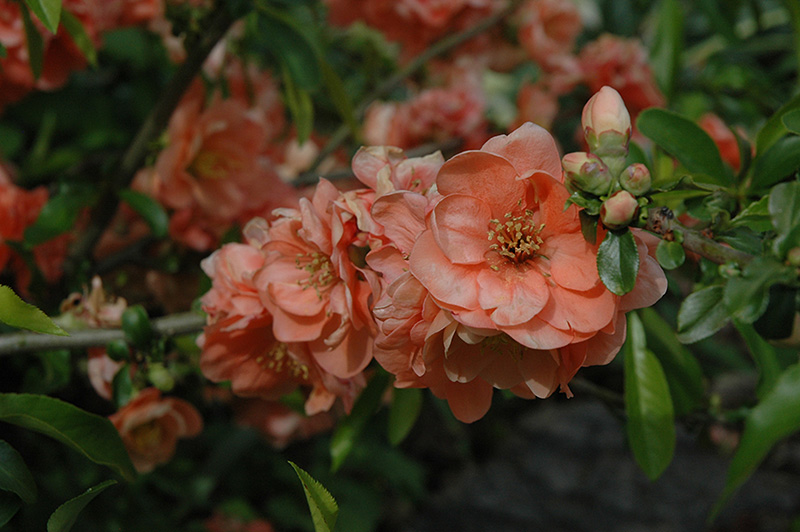
By Dirk Coburn, M.C.H.
Here at Weston Nurseries we’re often brought strange and interesting specimens and rare plant diseases to diagnose. For the first time in my 12 years here, we have seen two confirmed cases of cedar-quince rust on Amelanchiers. One case was on a customer’s tree that we recently inspected, and the other case was diagnosed by photos brought in by a homeowner. Again, this occurrence of a condition not seen in a long time.
Cedar-quince rust is a lot like cedar-apple rust, only much rarer and more pernicious. It requires a “cedar” host, which in our area is usually a juniper. The native junipers are said to be somewhat more susceptible than the Asian ones. It also requires a “quince” host, which can be any of a number of plants in the rose family, including fruiting quince (Cydonia), flowering quince (chaenomeles), hawthorn (Crataegus), apple (Malus), Amelanchier, or mountain ash (Sorbus), and possibly others. The spores generated on one host must germinate on the other host.
Unlike cedar-apple rust, cedar-quince rust does not just affect the leaves of the “quince” host. It gets into the wood and causes lesions on twigs or branches that swell into gall-like structures. The swollen segment erupts into fruiting bodies with an orange tinge that present the spores for dissemination. Then the fruiting bodies fade and the gall shrivels and darkens into something that looks a bit like black knot. Because these galls disrupt the cambium, cedar-quince rust can cause dieback pretty quickly.
There is no chemical treatment that can cure cedar-quince rust on its own.
If caught early, there is some hope that the affected wood can be pruned out. Pruning should be done several inches below the galls/lesions, and the removed material should be burned, trashed, or buried – NOT composted or shredded. After each pruning cut, the pruning shears should be sterilized with either rubbing alcohol or a 20% solution of chlorine bleach. The tree should then be sprayed well with a general-purpose antifungal product; propaconizole (the active ingredient in Infuse from Bonide) is a good choice because it soaks into the tissues and lasts a bit longer.
If the case is advanced, even those measures may not save the tree. When the lesions/galls are plentiful and/or well distributed around the plant and/or present in the trunk or in major branches, it is advisable to remove the plant and to replace it with something suitable to the site and not susceptible to the cedar-quince rust.










